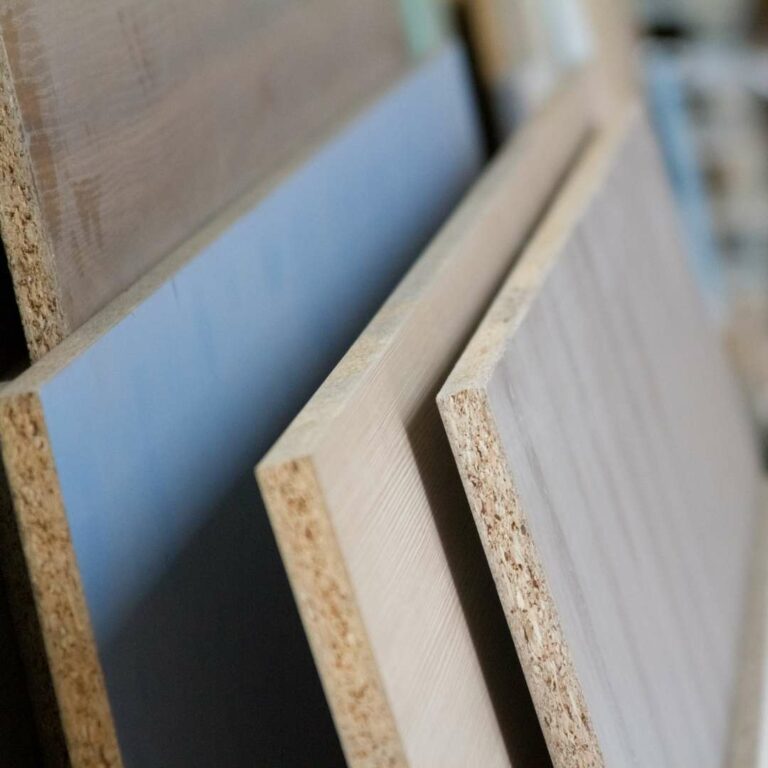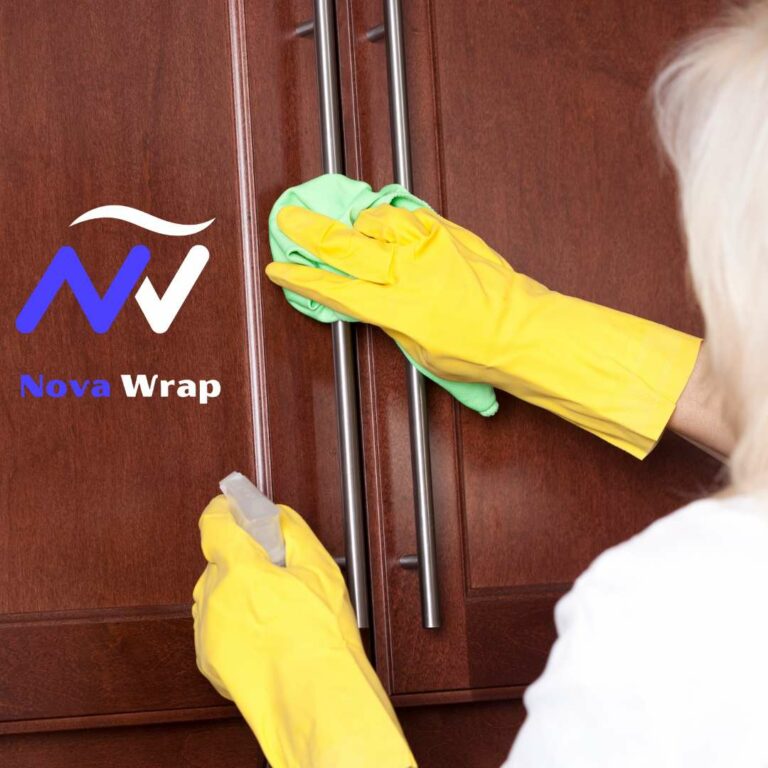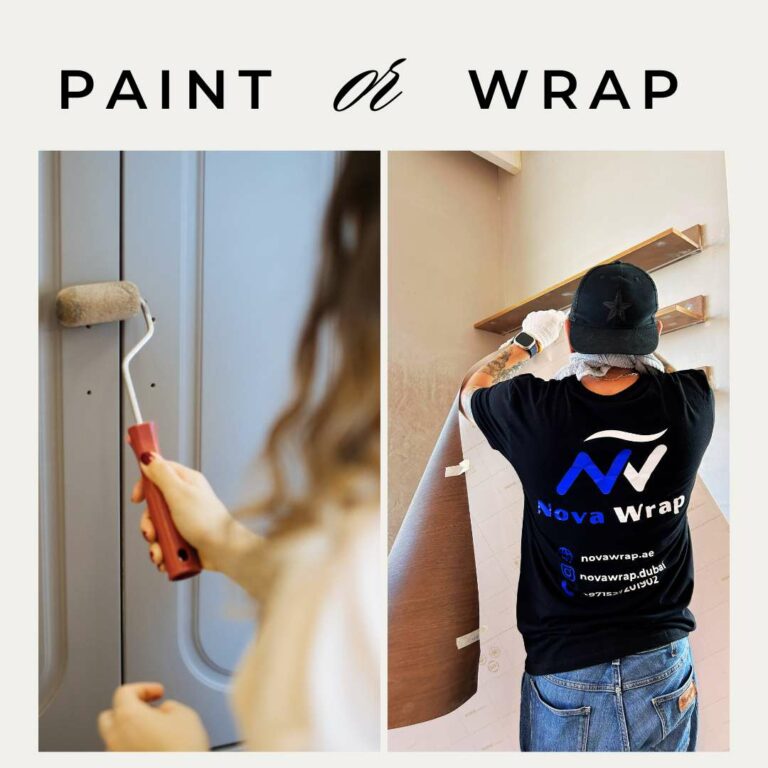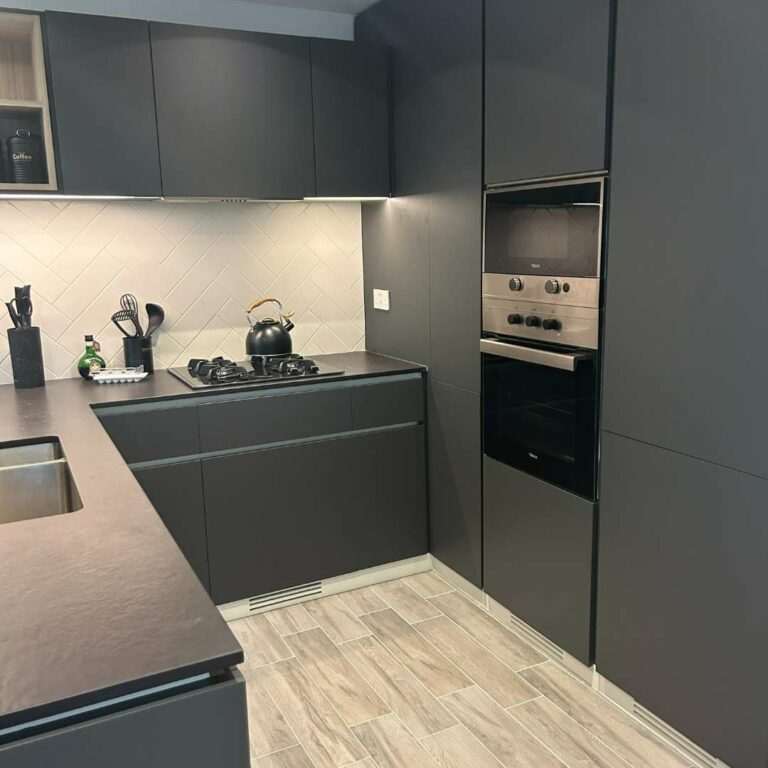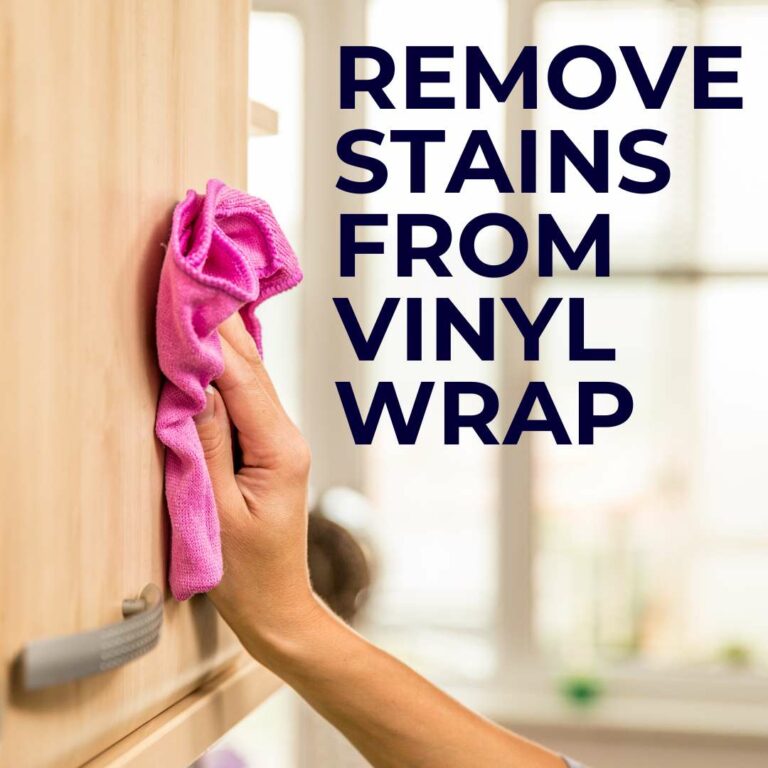Vinyl film wrapping has become an increasingly popular option for those looking to update their interiors without the hassle and expense of a full renovation. This innovative solution offers a range of benefits, from cost-effectiveness to environmental friendliness. Vinyl film is an incredibly versatile material that can be used to wrap just about anything, although some surfaces simply cannot be wrapped.
Speak To Our Team
If you’re interested in interior vinyl wrapping in Dubai, we’ve got your project under wraps!
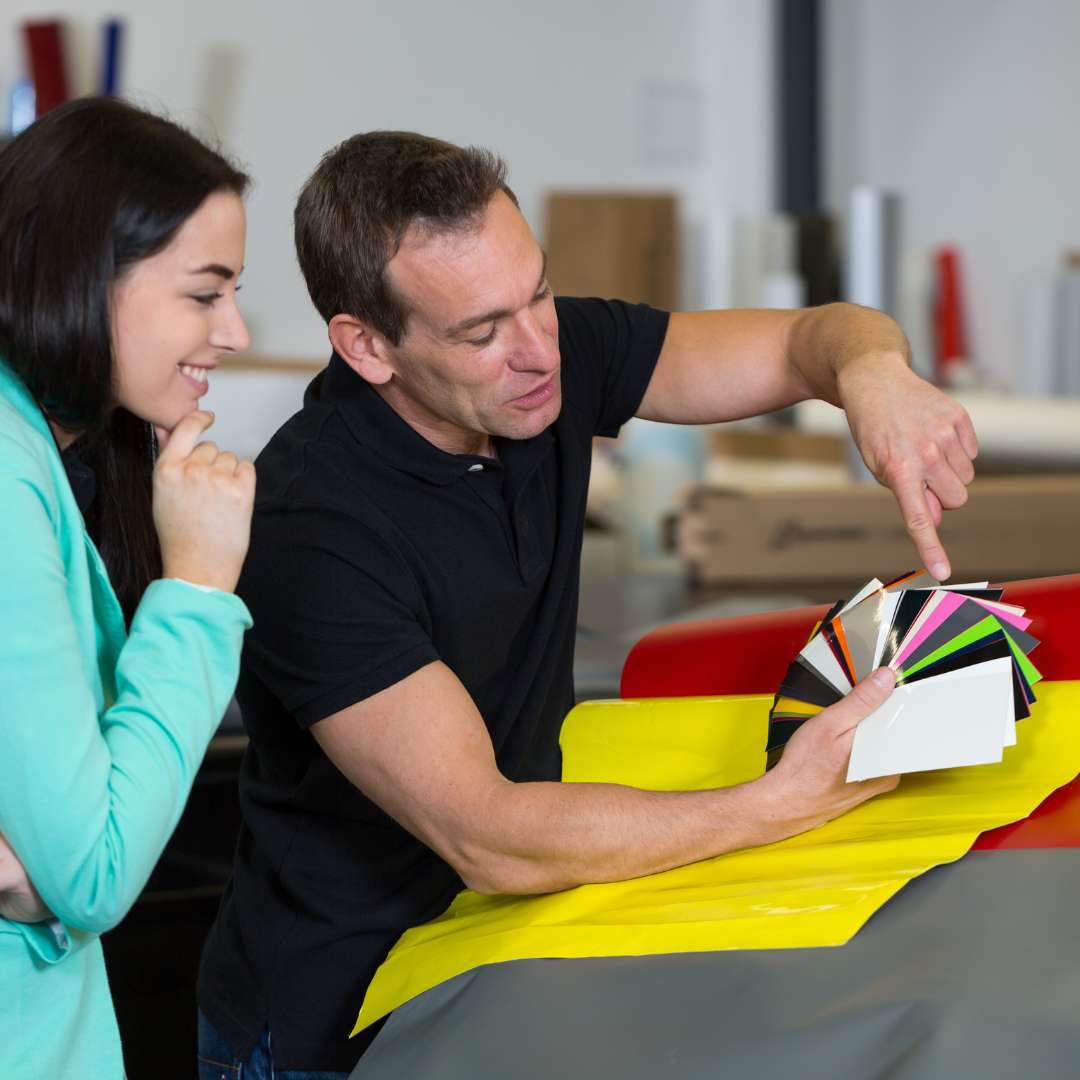
What Can You Vinyl Wrap?
- Smooth Surfaces: Vinyl adheres best to smooth, flat surfaces. This includes items like kitchen cabinets, wardrobes, and doors. Smooth surfaces allow the vinyl to stick evenly and reduce the risk of bubbling or peeling.
- Furniture: One of the most popular uses of vinyl wrap is in revamping furniture. Whether it’s wardrobes, tables, or chairs, vinyl-wrapping furniture can breathe new life into tired or outdated pieces.
- Kitchen Appliances: Vinyl wrapping isn’t limited to furniture; it can also be applied to appliances. Fridge, dishwasher, or washing machine looking a bit worn? A vinyl wrap can update the look of your appliances without the cost of replacing them. This is a great way to ensure your appliances match the aesthetic of your kitchen. Our appliance vinyl wrapping details how we can transform your kitchen appliances.
- Interior Spaces: Walls, doors, kitchen cabinets, and even countertops can be vinyl-wrapped. This is an excellent solution for updating the look of a room without permanent changes. Vinyl wrapping can also be a solution for rental properties, where modifications may be restricted.
- Vehicles and Elevators: While not related to interior design, it’s worth noting that vinyl wrapping is also widely used in automotive customization and elevator door and facades wrapping. This showcases the versatility and durability of vinyl as a material for both interior and exterior applications.
- Commercial Spaces: Vinyl wrapping commercial spaces can save a lot of money and provide a fast way to customize a room to a brand identity. We’ve applied our vinyl wraps for offices, restaurants, and hotels.
- Yacht Exteriors & Interiors: I’m sure you can imagine the costs of repainting or replacing parts on a yacht. Well, vinyl wrapping the yachts saves all that pain.
- Glass Windows and Window Frames: Window wrapping is a great way to change the tint in a room or add privacy. It has other benefits like keeping the heat out or in!
- Painted Surfaces: Painted walls, doors, and furniture can be excellent candidates for vinyl wrapping, provided the paint is in good condition and the surface has been cleaned thoroughly before application.
- Metals and Plastics: Appliances along with metal panels and plastic fixtures, can be transformed with vinyl wrapping.
- Glass and Ceramics: Windows, glass partitions, and tiled surfaces can be vinyl-wrapped to change their appearance or to add privacy. However, the surface needs to be clean and free from defects for the best results.
- Walls and Floors: Vinyl film even comes in materials that look just like floor and wall tiles. The surface may need to be thoroughly prepared before wrapping can happen, but rest assured that we can vinyl wrap floors and wrap wall tiles which offers a unique effect compared to wallpaper installation.
What Can’t You Vinyl Wrap?
While vinyl wrapping is adaptable, there are some limitations to what one can wrap. Typical surfaces that cannot be wrapped include:
- Rough Surfaces: Vinyl does not adhere well to rough or textured surfaces. The unevenness can prevent the vinyl from sticking correctly, leading to air bubbles and peeling.
- Dirty and Damaged Surfaces: Surfaces must be clean and in good condition before applying vinyl. Dirt, grease, or existing damage can interfere with adhesion, leading to a poor finish.
- Complex Shapes: While vinyl is flexible, extremely complex or intricate shapes can be challenging to wrap without creases or folds. Professional installers can manage slight curves and edges, but very intricate designs might be less suitable.
- Extremely Hot or Cold Surfaces: Vinyl has temperature limits. Extremely hot environments, like the exterior of cooking appliances, or very cold settings can affect the material’s ability to adhere and maintain its shape and color.
For those considering vinyl wrapping in their homes or businesses, it’s essential to consult with professionals to understand the best options for your specific needs. Check out our insights on surface preparation and vinyl application in our blog post on how to update kitchen cabinets without painting for more detailed information. Vinyl wrapping offers a world of creative possibilities, but knowing where and how to use it effectively can make all the difference in achieving a professional and lasting finish.

